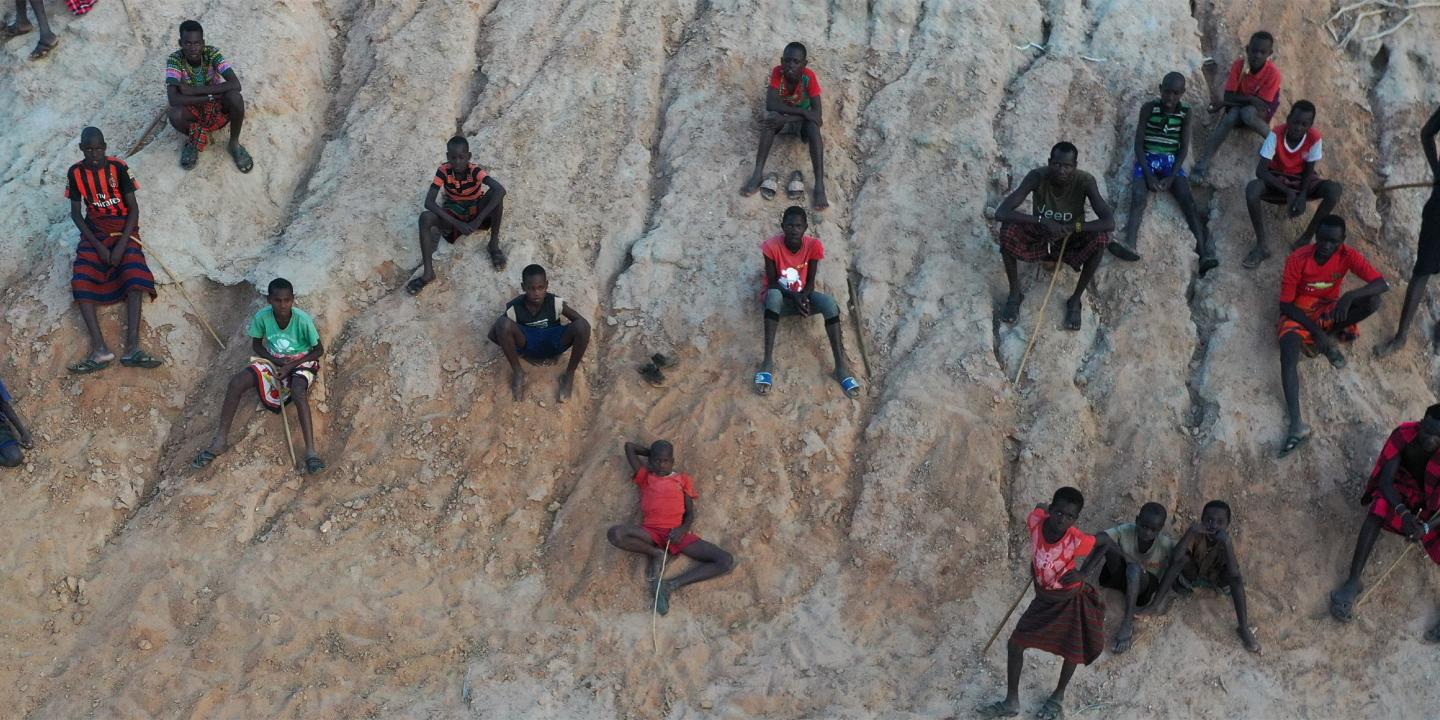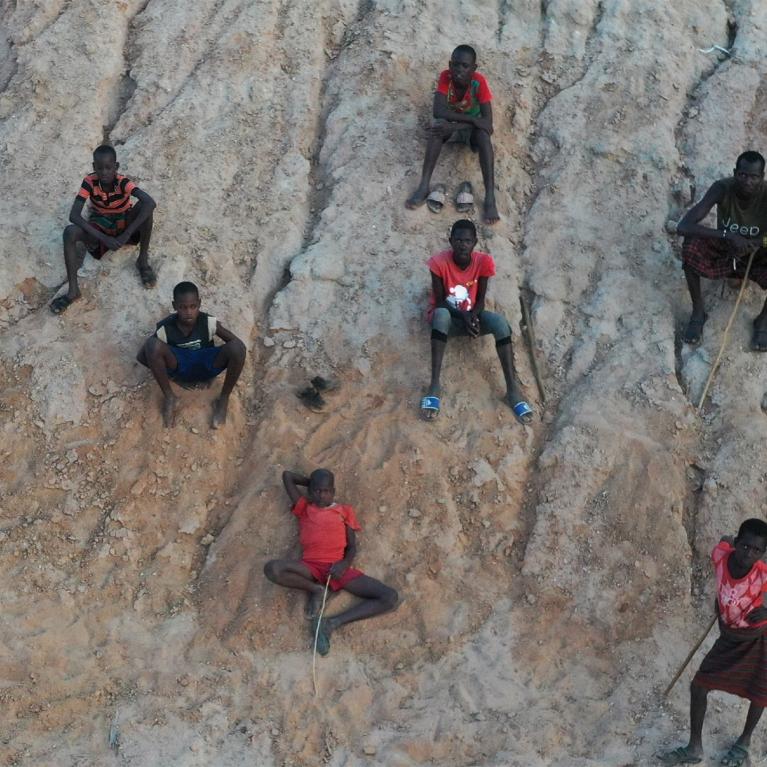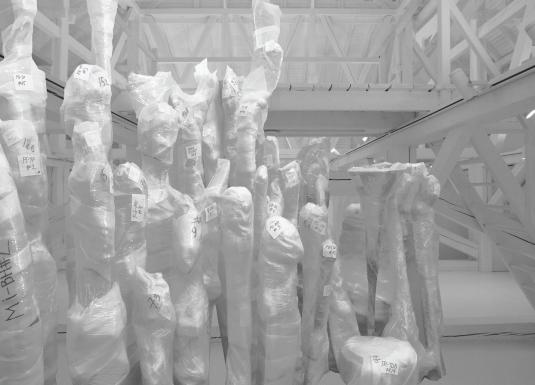Listening to the Rift Valley
EAMAN (Eastern African Museum of Art – Nairobi) will be built at the cusp of the Rift Valley. The Rift Valley meanders from Djibouti to Mozambique, uniting and dividing the countries and peoples of Eastern Africa.
Listening to the Rift Valley is their inaugural project, dedicated to the connections of the peoples of the Rift to its dynamically changing natural and cultural environment. The project investigates the artistic and scientific relationship with trees, the guards and protectors of the Rift, and the life evolving in their shade.
The exhibition shows four performances from the Listening to the Rift Valley project.
BEING TIME: Marking the Passage of Time with a Petrified Tree
A performance celebrating communication with a 12-million-year-old petrified tree in the desert of the Turkana Plateau, the cradle of humanity. The experience of being in the presence of fossilised trees millions of years older than any of our human ancestors inspired the performance.
The performance is based on the information derived from non-invasive scientific measurements of the state of the tree. Sensors measured the electrical resistivity of the wood and detected a signal demonstrating that the cellular core of the tree is still active. It concentrates on the annual rings of the tree as a metaphor for the continuity of life; the ancient tree is presented as a time coding tool and a memory keeper, a kind of “time machine.
RE-LIVE: Connections Through Movement at the Cusp of the Rift Valley
The performance took place in and on the banks of the Turkwel River, celebrating the encounter with the petrified trees and the continuity of life. Through the dance in the performance, protective gestures pave the way for communication between nature and humans.
The dance in the river is a moving tree. The performers’ movements are inspired by the inner state of the tree, reconstituted from the transmitted data. Dancing in the water of the Turkwel River, the bodies of the performers are doubled with their reflections.
Performance SINA SIRI NINA JIBU
The performance took place on the coastline rooftops of Shela village. The title was inspired by the Swahili inscriptions found on the broad rim of the khangas used in the performance. It translates as "I Have No Secrets but I have an Answer". The performance was carried out by the students from the Anidan Centre for Children, who interpreted the message from a baobab after learning about the methods the project used for data collection from trees. The performative dance of the creative young people of Anidan is an homage to the baobab, its wisdom, its resilience, and our effort to take the dialogue with nature to a new level of understanding, protection, and exploration.
Performance UKITAKA NIFURAHISHA, NIPE YA SIKUKUU
The performance took place at the beach of Lamu Island, in front of the Indian Ocean and Manda Island, home to the baobab tree, whose measurements captured by sensors were later colour-coded in khangas, an emblematic fabric of the Swahili coast. Passers-by could ask questions and walk over the work, becoming part of communication with the baobab. The khanga installation helped bridge the distance between trees and the human species.
Sayings printed along the wide rim of khangas have been a means of symbolic communication for ages, conveying the mood of the wearer. The title for the installation was taken from one of the khangas. UKITAKA NIFURAHISHA, NIPE YA SIKUKUU means “if you want me happy, give me a holiday gift”.
About 500 khangas were used for the installation.



